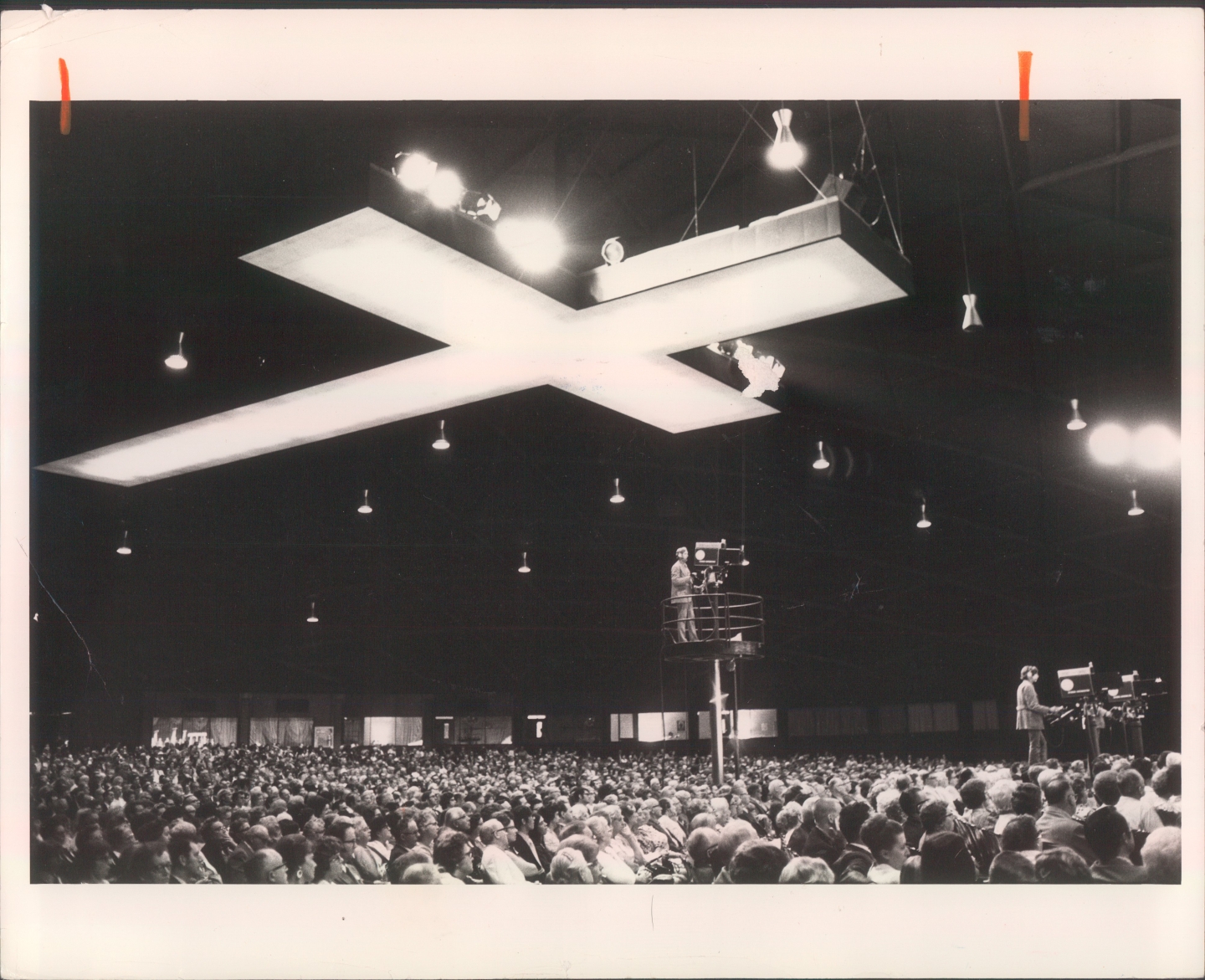
In 1967, Peter Berger wrote in The Sacred Canopy (1967) that the “world-building potency of religion” was now “restricted to the construction of sub-worlds, of fragmented universes of meaning, the plausibility structure of which may in some cases be no larger than the nuclear family.” And there was, among postwar critics, an equal sense that the scattering of communal life in some way followed the new prevalence of television, particularly in family homes. This is the fundamental context for what this lecture terms televangelical space, ritual sites—worship spaces, churches, but also broadcast stations, hospitals, and university campuses—either retrofitted to accommodate television or designed explicitly for its technology between the late 1950s and the early 1980s, a period simultaneously marked by the increasing cultural and political visibility of conservative Protestantism in the United States. An account of such spaces traces an ambivalence about the relationship between the contemporary and the sacred, and about the relationship between religious practice and the technological realities and cultural habits of an increasingly mediated and atomized present. The historical materialization of this negotiation generated both new kinds of ecclesiastical architecture and spatial effects that transcended its walls.
The Berlage Sessions is a thematic seven-part seminar series focusing on scholarly research and critical approaches to the history and theory of architecture and urban design. This spring’s series, entitled “In and Out of Scale,” examines select ideas and projects that reconsider the scalar relationships of the built environment, from radio transmission and television broadcasting to the model and the chair. Organized from the large to small scale, topics will include the remote transmission of information in the Cold War; televangelical spaces—worship sites, churches, hospitals, university campuses—that were either retrofitted to accommodate television or designed explicitly for its technology between the late 1950s and the early 1980s; the various interpretations and misinterpretations of “artificial land” in postwar Japan; how the construction of new garden cities not only scaled up building commissions but also created new local economies; on the staging of miniature landscapes for large-scale photographs; how scale models were used as descriptive instruments in nineteenth-century London; and a consideration of how the Indian planter’s chair affirms past influences while also sensitively converses with the present. Speakers will include Rachel Julia Engler, Jesse Honsa, Casey Mack, Sarita Sundar, Alfredo Thiermann, Matthew Wells, and Edwin Zwakman.
People
Rachel Julia Engler writes about faith and the secular as they intersect with technology and broadcast media. Her current research focuses on ritual sites inflected by television and its attendant infrastructures, specifically in the context of postwar Protestant evangelism. Engler holds a PhD from Columbia University, where she studied architectural history, and a BA from Yale University. She has taught architectural history and theory at Rice University (2021, 2022) and at Columbia. For the past fifteen years, she has also worked as an editor, of academic texts and art books, and as a translator from German to English. In 2019, her translation, with Reto Geiser, of Sigfried Giedeon’s 1929 illustrated manifesto Befreites Wohnen (Liberated Dwelling) was published by Lars Müller. Based in Oklahoma, USA, she is currently a Research Associate at the University of Oklahoma’s Gibbs College of Architecture.